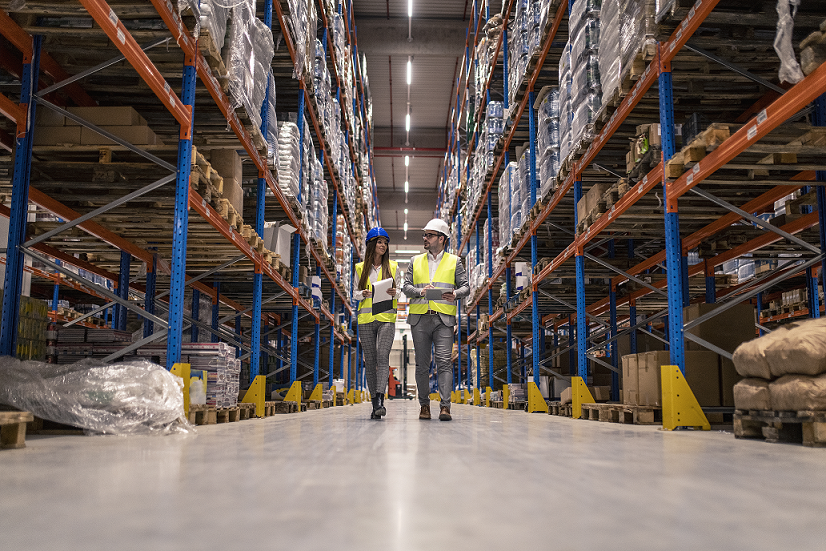Amidst the pandemic and stiff competition for business continuation, there is an increase of market volatility and customer demands for greater sustainability and visibility in the digital supply chain. In this article, Fabio Tiviti, the Senior Vice President and General Manager of ASEAN-India at Infor, explores a digitally connected ecosystem for businesses to identify the root causes of disruptions.

Subscribe to our Telegram channel to get a daily dose of business and lifestyle news from NHA – News Hub Asia!
A new era of supply chains is upon us. Recent times have shown that the industry is poised for massive change on multiple fronts — wrought by disruptions, bottlenecks, and uncertainties around global trade. Even pre-pandemic, rising geopolitical tensions, market volatility and increasing customer demands for greater sustainability and visibility have weighed heavily on supply chains. Yet despite this turbulence, organisations that have built resiliency into both their technology networks and operations have recovered quicker and stronger on the uptake. For others, though, these disruptions have served as a huge wake-up call.
In the first iteration of Malaysia’s Movement Control Orders (MCO 1.0), the local economy suffered and recorded RM 2.4 billion combined losses per day. The uncertainties around business continuation and repetitive rounds of restrictions impacted many organisations; grinding production and supply activities to a near halt.
As Malaysia now navigates its economic recovery amid a rising number of cases, businesses are finding themselves at a critical inflexion point — to reflect, regroup and rebuild for resiliency.
Visibility, Intelligence, and an Integrated Ecosystem
For supply chains to be truly resilient, they must be built upon three core foundations: visibility, intelligence, and a digitally connected ecosystem. Specifically, end-to-end, real-time visibility is imperative — businesses need to identify and understand the root causes of disruptions and detect exceptions when they arise. Then comes the ability to execute critical decisions through a digitised ecosystem, paving the way for autonomous ‘sense and respond’ capabilities.
In traditional business models, enterprises typically only base their visibility on the information presented by suppliers. They don’t really know the exact location of the order or the arrival time. However, cloud-based supply chain networks offer the opportunity for all parties to access a single view of an order, in real-time. The net result is that businesses, their suppliers, and carriers operate using a single instance of data — a single source of truth.
This singularity is important. It mitigates uncertainties and delays as well as eradicates disparate views, so there is little need for contingency factors in daily operations. But visibility needs to run end-to-end for true clarity. Businesses need to understand the impact of their actions upstream (on their suppliers) and as far as possible downstream (into their sales channels and customer base).
Cutting through the noise
As businesses move forward in strengthening supply chain resiliency, they can also leverage intelligent software algorithms that are able to detect and forecast disruptions across their operations and drill down into the root causes behind any single event. Beyond understanding that disruptions are present, businesses also gain insight from understanding why they happen. This enables much faster, more accurate issue resolution. For example, understanding the disparities between shortages caused by shifts in market demands, and the scarcity that results from a container ship stuck at the port will result in fundamentally different responses that will ultimately impact business’ bottom lines.
Onward from automation 1.0
Looking ahead, more of the actions we take inside our most resilient digital supply chains will be carried out autonomously by intelligent agents and smart algorithms. Our physical and financial supply chain networks will increasingly reflect the automation intelligence already being applied to manufacturing via Industry 4.0 practices.
To bolster this, the Malaysian government has unveiled its Industry4WRD Policy that encourages a wider adoption of Industry 4.0 practices across the manufacturing sector and its related services — with the aim to catalyse transformation, as well as develop best practices across people, process and technology.
With rising levels of complexity and disruption across global supply chains, ensuring simplicity, resilience, and visibility are more crucial than ever. Initiatives like Industry4WRD are a step forward in the right direction for businesses, as it serves to grant players across the supply chain — from sourcing to manufacturing and production — greater insight into how they can leverage smart technologies to enhance efficiency, productivity and resilience in supply chain management. The data from these supply chains can then be used to form highly integrated and intelligent engines, which supplement the transformation of smart, networked factories — ultimately placing Malaysia on the map as a hub for high-tech, advanced manufacturing, and as a key partner in the global supply chain.
If we stand at automation stage 1.0 today, then businesses are set to apply more algorithmic intelligence in the future. This intelligence will be both smart and resilient, making decisions not just on short term prices, supply availability and market demand, but also based on perceived business longevity. Simply put, Malaysia’s businesses need to rethink and rebuild their supply chains for resiliency today — to equip them to thrive in the disruptions and Black Swan events of tomorrow.
*This article was written by Fabio Tiviti who is the Senior Vice President and General Manager of ASEAN-India at Infor. He is responsible for Infor’s operations across the Southeast Asia region, including the sales and distribution of Infor solutions and services. With more than a decade of experience in IT Industry management he has been working at SAP in both small and medium enterprises (SME) and business development segments. Prior to SAP, he served as national product manager with Legrand Group, an Italian industrial and electronics company.
**Disclaimer: The views expressed are those of the writer and do not necessarily reflect those of NHA – News Hub Asia.
